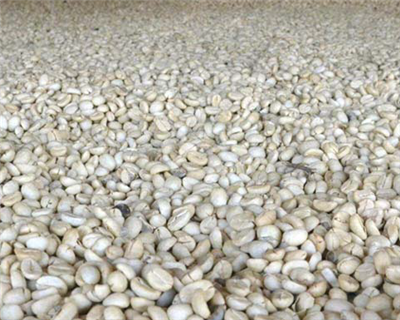Kenya’s Kyanzavi Farmers Cooperative is one example of how clubbing together into a single commercial estate can help individual farmers improve their yield, attract finance and pay it back.
It is also emblematic of the challenges and opportunities African agriculture faces. An electric pump, for example, would allow the Kyanzavi estate to install a new irrigation system that could double its production but it needs additional investment to afford one according to chairman James Muema.
A model in organisation
Already Kenya’s biggest coffee estate in terms of yield, Kyanzavi was formed from the union of around 1,800 individual farmers. It expects to produce 350 to 400 tonnes of coffee next year from 450,000 Arabica trees that stand in neat rows across 800 acres of land.
It is also one of the country’s best organised estates. During a field trip to Kyanzavi as part of the Fin4Ag conference, TXF was guided around its production facilities as Sasini general manager (coffee), James Muriithi Kieu, talked us through the stages of coffee processing.
After picking, the coffee beans enter pulping machines. These squeeze the ripened beans from their skin, which is then recycled as fertiliser. The beans then sit in fermentation tanks for six to 12 hours to break down their sugar content, before being cleansed in washing channels. An overnight soaking removes impurities. The beans are then spread on drying tables to cut moisture from 60-65% to around 10% and slash toxin levels. They are later milled and prepared for auction at the Nairobi Coffee Exchange or preferably for direct sale at a premium to private offtakers. The estate is managed by a board of directors and pays its workers more than Kenya’s government set minimum wage.
High quality borrower
Kyanzavi also demonstrates how agriculture can be a relatively low risk investment for banks, as long as it is organised and on a big enough scale.
Kenya’s Coffee Development Fund (CoDF) started financing Kyanzavi in 2011 with a Ksh20 million ($228,000) loan, according to resource mobilisation officer John Amimo. That loan, and all subsequent finance, has been repaid in full.
CoDF’s loans to Kyanzavi are disbursed in tranches, in line with the coffee calendar. To minimise risk the money is, where possible, disbursed directly to the estate’s suppliers. A first tranche is typically released in October or November to cover the cost of land preparation, initial inputs and casual workers’ wages. A second tranche pays for pesticides. A third tranche is paid at harvest time, at which point the loan is repaid by a government licensed marketing agent that buys the coffee from Kyanzavi and sells it on for local auction or export.
Financing Kyanzavi is made easier by the fact that all 19 of the plots into which it is divided come with the title deeds to the land. The fund typically takes two or three of those deeds as security. It would be much more difficult to finance a coffee cooperative where the smallholders involved did not hold title to the land they farmed, acknowledges Amimo.
Government funding crowds out commercial lenders
State sponsored CoDF was set up in 2006 with a mandate to help coffee producers access affordable, sustainable credit to improve the quality and quantity of their coffee and stabilise farmers’ incomes.
It was initially granted seed money from the government to enable it to lend at subsidised interest rates of around 5% to 10%. Although the intention was “honourable” and the fund has supported a large number of borrowers, this also means that CoDF has crowded out private
lenders, who are unable to compete on rates, says Amimo.
The government is now preparing to withdraw its financial support for CoDF, which could help level the playing field for commercial banks interested in agriculture. However, the fact that CoDF has gathered an unrivalled database of information on coffee growers’ risk profiles and repayment histories means it should be able to keep its rates low for quality borrowers.
Non performing debt shrinks
The fund has not always had an easy time, with around 20% of its total portfolio currently non performing. Much of this bad debt however was created in the fund’s first two years of existence, says Amimo. As its experience in the sector and ability to risk assess potential borrowers has grown, default rates for new loans have shrunk dramatically, he says.
The fund also expects to be able to collect around 15% to 20% of its total bad debt over the next two years as the withdrawal of Cooperative Bank of Kenya from the sector means borrowers will have to come back to CoDF and repay non performing loans before they can receive more credit.



